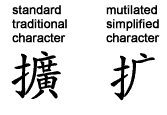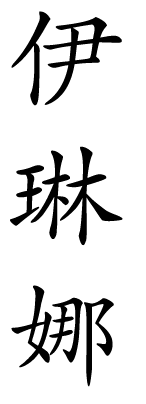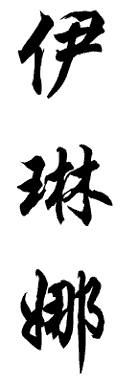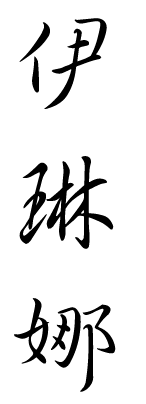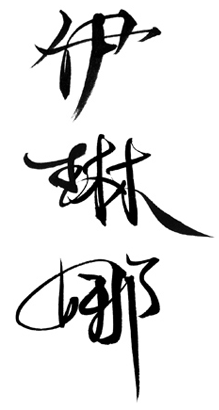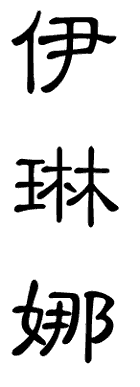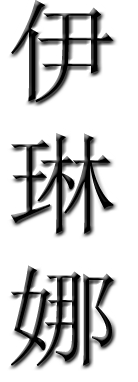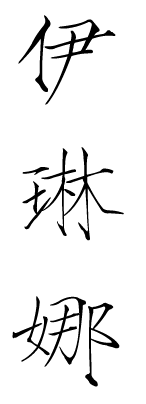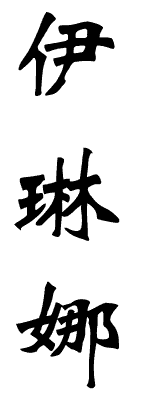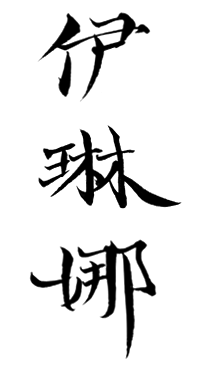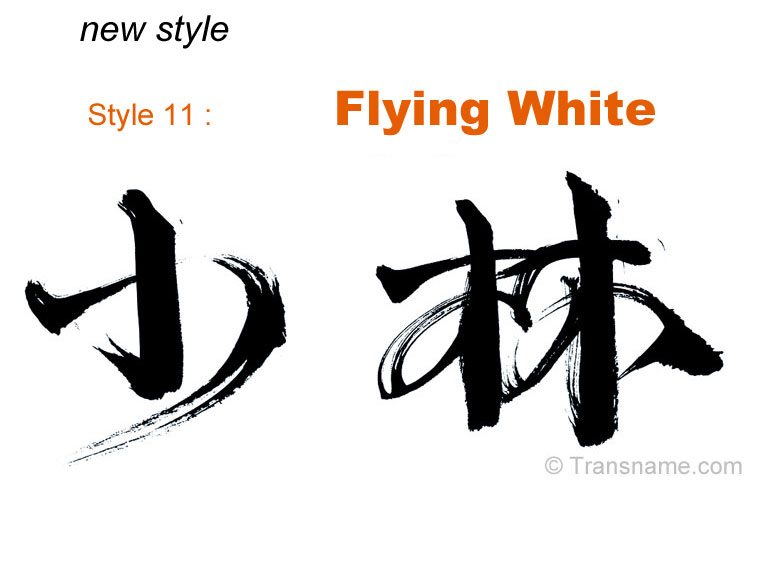Click to see Actual Size emailed to you

Read Testimonials
|
- How names are translated:
- Phonetic translation of English names: If you provide an English first name, we will translate the name based on the pronunciation in English, and then matching it with similar sounding Chinese characters. Since different Chinese characters can have the same pronunciation, you can thus specify the traits/meaning that you prefer for your translated name and the most appropriate characters will be used whenever possible.
- Translation of full name into Chinese style name: Most Chinese names have 3 or 2 characters, with the first character being the surname and the remaining characters being the first name. In the Chinese culture, the surname comes before the first name. There are only about 100 common Chinese surnames. If you provide your full name, the closest matching Chinese surname will be used. Your name will be translated phonetically into Chinese characters which sound similar.
- Some other sites may have standard phonetic translations for English names, with no attention paid to the meaning of the individual characters. Our team will give each name careful thought, and with your input, will come up with a meaningful phonetic translation. For instance, for the name shown in the sample, we have matched the Surname of "Gore" with a Chinese surname which also means tall. We have translated "Leo" phonetically, paying attention to the meaning of each individual character. The outcome is a name which means "standing tall with miles of pride".
- We will provide you with both large GIF and small JPG files at 72 ppi and 300 ppi respectively for your convenience (see samples).
-
We strive to keep our customers satisfied with fast and quality service. See feedback from our customers.
You can only order Tai's one-of-a-kind grass and brush tattoo calligraphy here at Transname.com and not anywhere else.

Videos of Tai writing her grass calligraphy
|
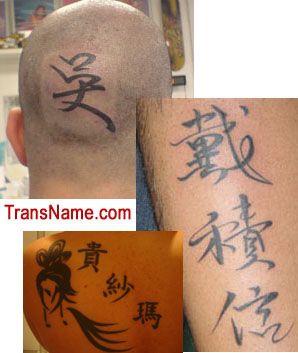
photos from our clients using our designs
|







